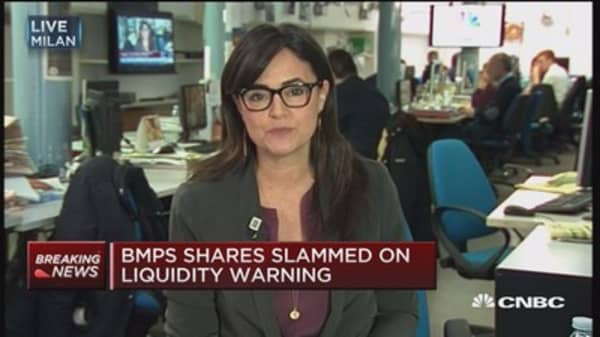More than eight years after the collapse of the global financial system, Europe's banks are still struggling — and things may get worse.
The latest threat to euro zone banks comes from Italy, where Monte dei Paschi, the world's oldest bank, is running out of cash. On Wednesday, the bank disclosed that unless it gets fresh capital, it will be insolvent within four months. Previously, it was saying it had enough cash to last 11 months.





